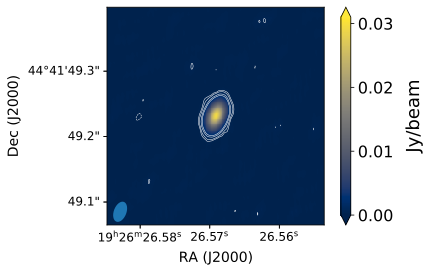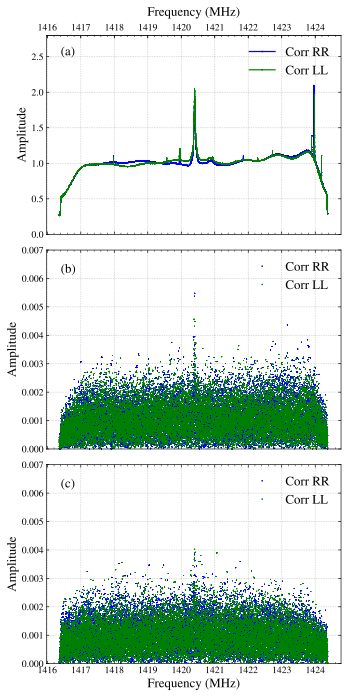
An Interferometric SETI Observation of Kepler-111b
Kelvin Wandia

Although the question of the existence of extraterrestrial intelligence is among the most profound, it has received little attention from mainstream astronomy. In the last decade or so, SETI has seen renewed interest which is largely driven by private funding e.g. Breakthrough Listen leading to the development of new tools and techniques. However, the instruments used in these searches have remained the same, large single dishes e.g. the Green Bank Telescope (GBT) albeit beam-formed arrays e.g. the Allen Telescope Array (ATA) and the MeerKAT have come into play.
Very long baseline interferometry (VLBI) was rarely used for SETI, primarily due to impediments imposed by hardware correlators on the spectral resolutions demanded to search for narrow-band doppler-drifting signals and the lack of good SETI candidates. These impediments have now been overcome using software correlators which are more flexible in terms of the spectral/temporal resolutions of their output products and the furnishing of good candidates especially by the Kepler spacecraft. VLBI offers advantages over large single dishes/beam-formed arrays that are particularly attractive to SETI. VLBI is less susceptible to local terrestrial RFI which is a major source of false positives in SETI. The multiple baselines also add redundancy which is crucial for verification in case of detection. VLBI also offers precise localisation capabilities. Furthermore, correlating data with high spectral and temporal resolution preserves a wide field of view furnished with many candidates, as opposed to the pencil-shaped beams employed for targeted searches by beam-formed arrays, which increases serendipity.
To demonstrate the feasibility of using VLBI for SETI and develop a data analysis and interpretation scheme, we made observations of the Kepler field at 21 cm and recorded the data using a single 8 MHz spectral window. The goals were to identify eight secondary phase calibrators (selected from NVSS) that would serve as the main phase calibrators for future SETI observations in the field and to search for signals from Kepler-111b, an earth-like exoplanet orbiting a G-type star about 8 arcminutes from the VLBA calibrator J1926+4441. The experiment employed phase referencing with a cycle time of 2+ 7 minutes for the VLBA phase calibrators and the secondary phase calibrators respectively. J1926+4441 was observed for 10 minutes. All sources were observed in two scans that were separated in time yielding a total observation time of 14 minutes for the secondary phase calibrators and 20 minutes for J1926+4441. We correlated the data in two passes; in the first pass all the sources were correlated using 32 frequency channels and 2 seconds of integration and in the second pass, the scans of J1926+4441 were correlated using 16384 channels (488 Hz/channel) and 0.25 seconds of integration which preserved a field of view of 3.97 arcminutes.
Although all the secondary calibrators are detected by VLASS, our snapshot observations failed to detect any of them. In hindsight, we did not calculate the spectral indices of the sources during target selection. Naturally, we were able to detect J1926+4441 however, the discovery of a spectral feature near the frequency of the HI line complicated the analysis of the data. This feature showed comparable characteristics in the auto and cross-correlations. We queried galactic hydrogen atlases and concluded that the feature is an artefact associated with the presence of HI within the telescope beams. To continue with our search for narrow-band signals, we flagged the channels affected by the feature, subtracted the bright response of J1926+4441 and then phase-rotated the data to the location (using proper motions from Gaia) of Kepler-111b. We adopted a maximum drift rate of 2Hz/s which limits the maximum integration time we could use to produce images to about 240 seconds. We thus divided the data into six 200s chunks and then made three-dimensional cubes in right ascension, declination, and frequency which we searched for signals in each channel with SNR>7. We did not detect any. We then constrained the effective isotropic radiated power (EIRP) for a transmitter on the planet to 4 × 10^15 W.
